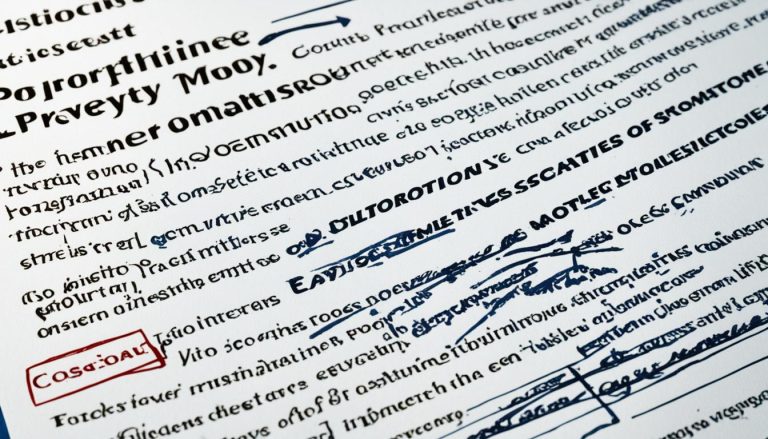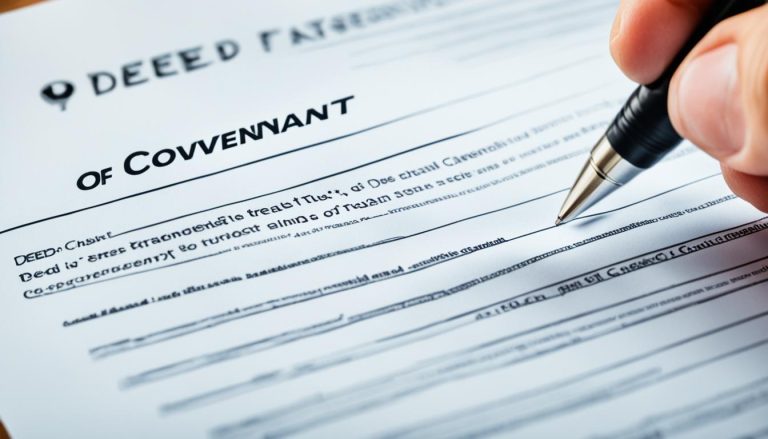Have you ever felt trapped by restrictive covenants that limit what you can do with your property? It’s a frustrating situation that many homeowners face, but fear not! In this blog post, we’ll explore some creative and effective ways to navigate around these pesky restrictions and regain control of your property. So buckle up and get ready to reclaim your freedom from restrictive covenants!
What are Restrictive Covenants?
Restrictive covenants are legal clauses that are found within a property’s title deeds. These clauses limit or prohibit certain actions that the property owner can take. Restrictive covenants can be either negative or positive in nature.
Negative and Positive Restrictive Covenants
Negative restrictive covenants are those that restrict certain activities on the property. Examples include bans on keeping pets, using the property for commercial purposes, building extensions, or altering the property’s appearance. Positive restrictive covenants, on the other hand, mandate that the property owner must take specific actions, such as maintaining the property’s landscaping or repainting the exterior at regular intervals.
Examples of Restrictive Covenants
Restrictive covenants can cover a wide range of restrictions and requirements. Some common examples include:
- Prohibitions on keeping pets or certain types of pets
- Limits on the size, style, or placement of fences, sheds, or other outbuildings
- Requirements to maintain the property’s landscaping or exterior in a specific manner
- Bans on using the property for commercial or business purposes
- Restrictions on the addition of extensions, conservatories, or other structural changes
- Limitations on the materials, colours, or designs that can be used for the property’s exterior
These restrictive covenants generally “run with the land,” meaning they apply to subsequent owners of the property, even if they were unaware of their existence at the time of purchase.

Finding Restrictive Covenants on Your Property
Navigating the complexities of real estate transactions can be daunting, especially when it comes to understanding the restrictions placed on a property. Restrictive covenants are legal agreements that limit how a homeowner can use their land, and finding them is a crucial step in the buying process. Let’s explore where these covenants are typically located and how to uncover them.
Restrictive covenants are commonly found in the property’s title deeds or the Title Register’s Section C. These documents may contain specific details about the restrictions, either directly or by referencing an attached document. Solicitors often need to review historical conveyance documents to determine the full scope and enforceability of any restrictive covenants.
Mortgage lenders may also raise concerns about restrictive covenants that could impact the property’s value or future sale. Potential buyers should be aware of these issues and work closely with their solicitors to ensure they fully understand the implications of any restrictions on the property.
| Where to Find Restrictive Covenants | What to Look For |
|---|---|
|
|
By understanding where to find restrictive covenants and the type of information they contain, homebuyers can make informed decisions and avoid potential pitfalls during the purchasing process. Whether you’re a first-time buyer or an experienced property investor, this knowledge can help you navigate the complexities of real estate with confidence.

Breaching a Restrictive Covenant
Breaking a restrictive covenant can have serious consequences for property owners. This legally binding agreement can result in financial penalties, demands to revert the property to its original state, or even termination of the lease. Understanding the implications of breaching a restrictive covenant is crucial for property owners and occupiers.
Who Enforces Restrictive Covenants?
The right to enforce a restrictive covenant typically lies with the beneficiary, known as the covenantee. The covenantee must demonstrate that the covenant “touches or concerns the land” in order to take legal action. This means the covenant must have a direct impact on the use or enjoyment of the property.
Can a Neighbour Enforce a Restrictive Covenant?
In some cases, neighbours with an interest in the land may also be able to enforce a restrictive covenant through legal action, such as obtaining an injunction to stop the breach. Neighbours may have a legitimate interest if the breach of the covenant affects their own property or the surrounding area. However, the threshold for a neighbour to enforce a covenant is generally higher than for the original covenantee.
| Scenario | Enforcement of Restrictive Covenant |
|---|---|
| Breach by property owner | Covenantee can take legal action |
| Breach affecting neighbouring properties | Neighbours may be able to enforce the covenant |
| Breach with no direct impact on others | Enforcement may be more challenging |
The key takeaway is that breaching a restrictive covenant can have significant consequences, and the ability to enforce the covenant depends on the specific circumstances and the parties involved. Property owners and occupiers should carefully review any restrictive covenants attached to their property and seek legal advice before undertaking any actions that could be in breach.
How to Get Around Restrictive Covenants?
Restrictive covenants can pose significant challenges for property owners, but with the right approach, there are ways to navigate around them. Two key strategies worth exploring are the lack of traceability of the restrictive covenant and issues with the drafting of the covenant itself.
Lack of Traceability of the Restrictive Covenant
One potential way to get around a restrictive covenant is if the beneficiary of the covenant cannot be traced. When the party who holds the rights to the covenant is unknown or untraceable, it can become difficult, if not impossible, to enforce the covenant. This lack of traceability may render the covenant unenforceable, providing a potential avenue for property owners to circumvent its restrictions.
Restrictive Covenant Drafting
Another approach is to scrutinise the wording and drafting of the restrictive covenant itself. A solicitor can carefully examine the language used in the covenant to determine if it is legally watertight and binding. Ambiguous or outdated language may call the covenant’s enforceability into question, potentially allowing property owners to find a way around its limitations.
By exploring these strategies, property owners may be able to navigate the complex landscape of restrictive covenants and find solutions that align with their needs and objectives. It’s essential to seek professional legal advice to ensure any actions taken are within the bounds of the law and to fully understand the risks and implications involved.
| Strategies | Potential Benefits |
|---|---|
| Lack of Traceability of the Restrictive Covenant | If the beneficiary of the covenant cannot be traced, the covenant may be deemed unenforceable. |
| Restrictive Covenant Drafting | A solicitor can examine the wording of the covenant to determine if it is legally binding, as ambiguous or outdated language may call the covenant’s enforceability into question. |
Negotiating Release or Modification of a Restrictive Covenant
Navigating the complexities of restrictive covenants can be a daunting task, but one potential solution is to negotiate a release or modification of the covenant. This approach often involves reaching an agreement with the beneficiary of the covenant, typically through monetary compensation, to address their concerns and allow the property owner to make the desired changes.
The process of negotiating release of restrictive covenant or modifying restrictive covenant can be a delicate one, as the beneficiary’s interests must be carefully considered. The property owner’s goal is to find a mutually agreeable solution that satisfies both parties, allowing for the necessary changes while respecting the beneficiary’s concerns.
Steps to Negotiate a Release or Modification
- Identify the Beneficiary: Determine who holds the interest in the restrictive covenant and who must be approached for negotiations.
- Compensating beneficiary to remove restrictive covenant: Prepare an offer of monetary compensation or other considerations that may entice the beneficiary to agree to a release or modification of the covenant.
- Engage in Negotiations: Approach the beneficiary and engage in open and transparent discussions to find a mutually acceptable solution.
- Formalise the Agreement: Once an agreement is reached, ensure that the release or modification is properly documented and legally binding.
| Negotiation Approach | Potential Benefits | Potential Challenges |
|---|---|---|
| Direct Negotiation with Beneficiary |
|
|
| Seeking Legal Intervention |
|
|
Ultimately, the success of negotiating release of restrictive covenant or modifying restrictive covenant will depend on the property owner’s ability to find common ground with the beneficiary and reach a mutually beneficial agreement. With patience, creativity, and a willingness to compromise, the property owner can often find a way to overcome the challenges posed by restrictive covenants.

How to Get Around Restrictive Covenants?
Navigating restrictive covenants in the United Kingdom can be a complex undertaking, but with the right approach, it is possible to find legitimate ways to overcome these legal obstacles. The key lies in understanding the specific terms of the covenant, identifying the beneficiary, and exploring legitimate avenues to modify or release the covenant, while being mindful of the potential costs and risks involved.
One strategy to consider is the lack of traceability of the restrictive covenant. If the original beneficiary of the covenant cannot be identified or has long since disappeared, it may become difficult for a new owner to enforce the restrictions. In such cases, seeking legal advice on the feasibility of challenging the covenant’s validity can be a prudent step.
Another approach is to scrutinise the drafting of the restrictive covenant. Poorly worded or ambiguous covenants may be open to interpretation, potentially providing an opportunity to argue that the proposed use of the property does not violate the covenant’s intent. Engaging a legal professional to review the covenant’s language can often uncover such nuances.
- Understand the specific terms of the restrictive covenant
- Identify the beneficiary of the covenant
- Explore legitimate avenues to modify or release the covenant
- Assess the potential costs and risks involved
- Investigate the traceability of the restrictive covenant
- Scrutinise the drafting of the restrictive covenant for ambiguities
It’s important to note that the cost of enforcing a restrictive covenant can vary widely, depending on the complexity of the case and the legal expertise required. Some property owners may find that the expense of challenging a covenant outweighs the potential benefits, making negotiation a more practical option.
| Factors Affecting the Cost of Enforcing a Restrictive Covenant | Explanation |
|---|---|
| Complexity of the case | The more complex the legal issues involved, the higher the cost of enforcement. |
| Legal expertise required | Engaging a specialist solicitor or barrister can significantly increase the overall cost. |
| Length of legal proceedings | Lengthy court battles or negotiations can drive up the total cost of enforcement. |
| Potential damages or settlement costs | If the court rules in favour of the property owner, the beneficiary may be required to pay damages or agree to a settlement, adding to the overall cost. |
In conclusion, while restrictive covenants can pose significant challenges for property owners, there are legitimate strategies and legal considerations to explore in order to overcome these obstacles. By understanding the specifics of the covenant, identifying the beneficiary, and carefully navigating the legal landscape, property owners in the UK can often find a way to get around restrictive covenants and unlock the full potential of their properties.
Conclusion
In summary, restrictive covenants in the UK can present significant challenges for property owners and developers, but there are lawful strategies to overcome them. By understanding the different types of covenants, identifying the beneficiary, and exploring options like challenging the covenant’s enforceability or negotiating a release, property owners can find solutions that align with their goals while respecting legal boundaries.
The key takeaways on navigating restrictive covenants in the UK are to work closely with experienced legal professionals, be proactive in researching the property’s history, and consider creative approaches that balance one’s needs with the legal framework. With the right knowledge and a strategic mindset, property owners can successfully get around restrictive covenants and unlock the full potential of their properties.
Ultimately, the summary of how to get around restrictive covenants in the UK lies in a combination of legal expertise, diligent research, and a willingness to explore innovative solutions. By taking this comprehensive approach, property owners can confidently navigate the complexities of restrictive covenants and achieve their desired outcomes.
FAQ
What are the consequences of breaching a restrictive covenant?
Breaching a restrictive covenant can lead to financial penalties, demands to revert the property to its original state, or even termination of the lease. The right to enforce a restrictive covenant typically lies with the beneficiary, known as the covenantee, who must demonstrate that the covenant “touches or concerns the land.”
Can a neighbour enforce a restrictive covenant?
Yes, neighbours with an interest in the land may be able to enforce a restrictive covenant through legal action, such as obtaining an injunction to stop the breach.
How can I get around a restrictive covenant?
There are two potential workarounds for restrictive covenants: if the beneficiary of the covenant cannot be traced or the covenant has been assigned to a third party, it may be deemed unenforceable due to lack of traceability. Additionally, a solicitor can examine the wording of the covenant to determine if it is legally watertight and binding, as ambiguous or outdated language may call the covenant’s enforceability into question.
How can I negotiate the release or modification of a restrictive covenant?
The first step is often to approach the beneficiary directly and negotiate a release or modification of the covenant. This typically involves some form of monetary compensation to the beneficiary, as their interest in maintaining the covenant must be considered. The goal is to reach a mutually agreeable position that allows the property owner to make the desired changes while addressing the beneficiary’s concerns.





